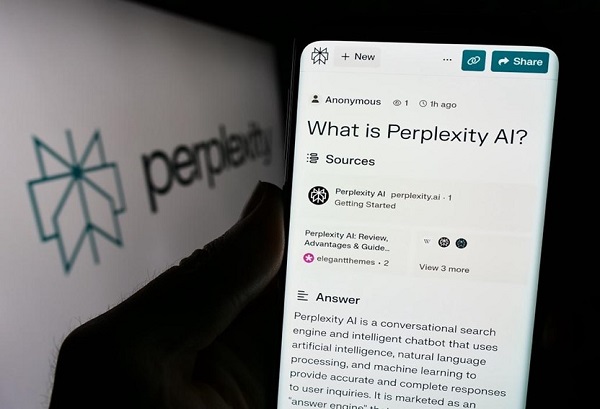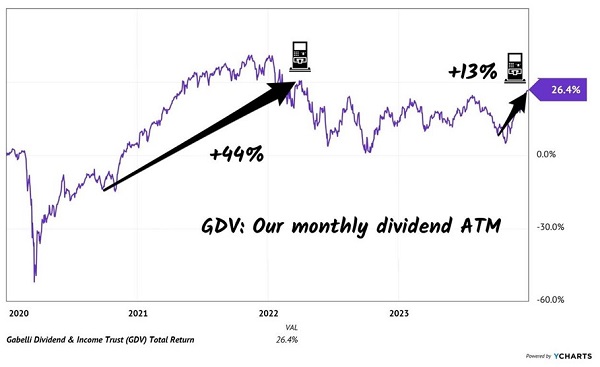Google is in trouble. The stock market is beginning to sniff that out.
As an income investor, you may think that you don’t care. But you probably should. We all need to take note, because Alphabet (GOOGL) shares are everywhere.
Let’s make sure that Google’s rotting core product—and business model—don’t stink up our perfectly good retirement portfolio. In a moment, I’ll name-check specific ETFs and CEFs (closed-end funds) to avoid.
First, let me give the world’s first postmortem on Google. It was a heck of a run for a technology product, more than 20 years as the “go to” search engine. During its heyday Google was all about relevance. A spartan home screen with one search box and a promise that the return results would read our minds.
In return for the search magic, Google monetized its creation using one of the most successful business models of all time: AdWords. Google reserved some prime real estate at the top and side of the search results for advertisers. The more they bid for the keyword term, the higher they would rank.
Advertiser relevance was, conveniently, a byproduct of this lucrative model. It funded 20+ years of high growth. Every year, more advertisers came to AdWords (recently rebranded as Google Ads) to land customers. They paid more and more per keyword. Google snuck a few more ads into the search results. The stock price hummed higher.
Google had a monopoly for many years, but monopolies don’t last forever in technology. Gravy trains attract attention and capital and smart people who build a better mouse trap.
Earlier this year I began using Perplexity AI for search. I was hooked from the start, as the tool provided clear, concise and well-researched answers. Its nickname is the quite-fitting “Google Killer.” Ha!

Whether or not Perplexity kills Google remains to be seen. What is clear is that someone is going to take down the king. And it is clear that Google itself does not have the guts to eat its own lunch—the tech giant is too profitable and exists on the quarterly Wall Street treadmill. It simply won’t—can’t—make a big bet on the future of search that blows up its current search gravy train.
Last week, the developers who brought us ChatGPT announced that they are working on SearchGPT. Alphabet’s stock didn’t take the news well, falling 6% last week. I would imagine that SearchGPT’s results end up looking like some version of Perplexity. This model is clearly the future of search, and it’s moving forward without Google, which is stuck in the 2000s.
The search dinosaur is going to weigh heavily on ETFs and CEFs. SPDR S&P 500 ETF (SPY) is the obvious one, with a 4% weighting to Google. I warned about SPY two weeks ago and the benchmark ETF has been whacked since. Look out if Google moves from leader to laggard.
This is where we income investors must pay attention. I realize the temptation is to laugh haughtily. “Ha ha ha, Brett—we do not own SPY! It does not yield!”
Fair enough. So, let’s consider Eaton Vance Tax-Managed Global Diversified Equity Income Fund (EXG), one of our go-to SPY proxies. EXG yields 9.5% and trades at a 9% discount to its net asset value. The fund generates a “synthetic yield” by buying S&P 500 stocks and selling (“writing”) covered calls against the positions for additional income.
So all good, right? Not quite. EXG has a hefty 4.6% position in Google. Not to mention a 4% position in NVIDIA (NVDA) which boasts a bubbilicious price-to-sales ratio of 38! Gulp!
These are potentially problematic positions we must consider when we evaluate CEFs. But most vanilla dividend investors don’t do this. They see 9.5% and buy blindly.
JP Morgan Equity Premium Income (JEPI) is better balanced. It yields 7% and limits individual stock positions to 2% of its portfolio. (Thanks, Perplexity.)

GOOGL comes in below the limit at 1.6% as I write.
Old Contrarian Income Report favorite Gabelli Dividend & Income (GDV) handles my new Google allergy even more expertly—zero exposure! GDV owns higher yielding blue-chip stocks, generating its 5.7% yield via monthly dividend payments and price gains.
At CIR, we lovingly call GDV our “monthly dividend ATM” because we only buy GDV when its price is low. The playbook is to hold it for months at a time and then sell high. Our two holding periods have generated fast 44% and 13% returns respectively:
GDV: Our Google-Free Monthly Dividend ATM

We have had success with EXG as well, our fling bringing sweet 42% gains. But I don’t see us getting together with this old flame again soon. Manager Christopher Dyer needs to get his Google exposure under control.
Someone, please, send Chris a link to Perplexity… and perhaps a spot on SearchGPT’s wait list!
We demand perfection at CIR, which means only perfect income investments need apply. We don’t tolerate no- or low-paying tech dinosaurs derailing our dividend-powered retirement portfolios.
Instead, we focus on little-known market vehicles that can 2x, 3x and even 5x our retirement income. Together they comprise what I call a Perfect Income Portfolio—please let me explain in detail.
